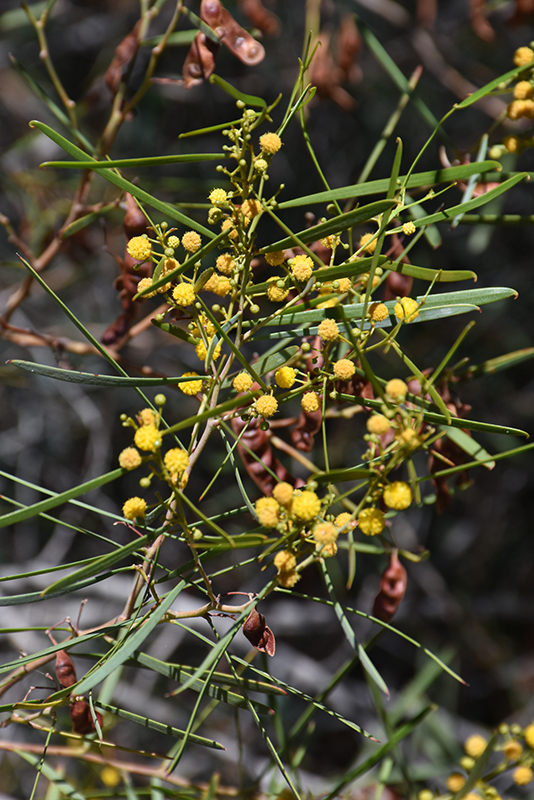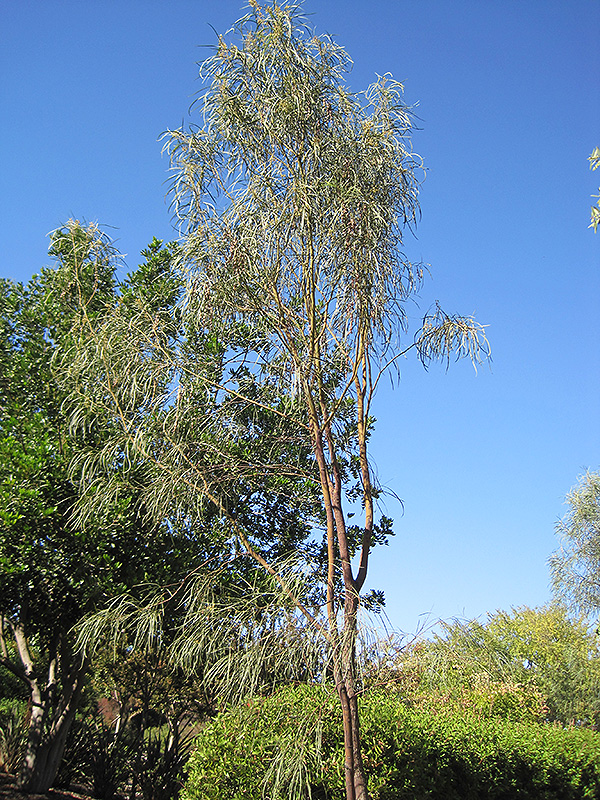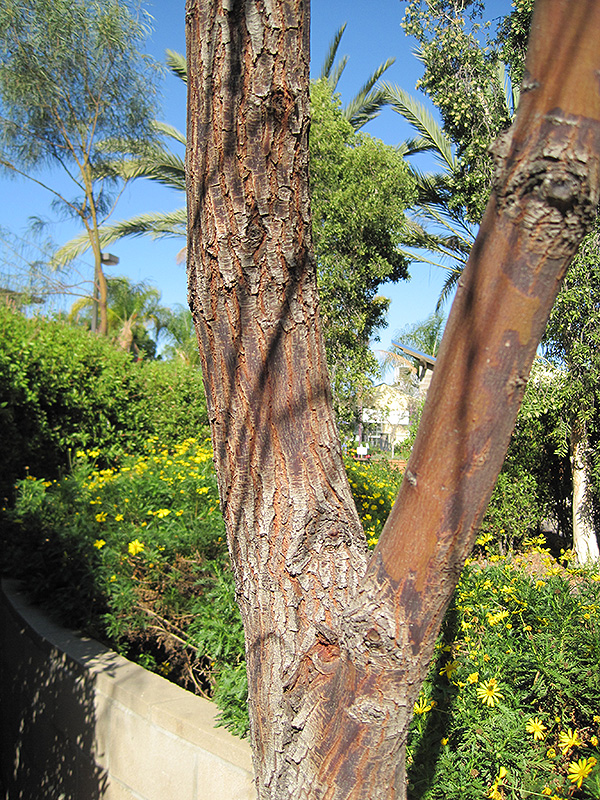Height: 30 feet Spread: 20 feet
Sunlight:
Hardiness Zone: 9a Description: This upright evergreen tree with gracefully weeping branches and foliage adds an air of elegance to the garden landscape with its cascading,narrow gray to gray-green foliage; prefers fertile, well drained, sandy soils and full sun; drought tolerant Ornamental Features Shoestring Acacia is primarily valued in the landscape for its highly ornamental weeping form. It features subtle clusters of buttery yellow ball-shaped flowers along the branches from late winter to late spring. It has attractive grayish green evergreen foliage. The narrow leaves are highly ornamental and remain grayish green throughout the winter. Landscape Attributes Shoestring Acacia is a multi-stemmed evergreen tree with a rounded form and gracefully weeping branches. Its average texture blends into the landscape, but can be balanced by one or two finer or coarser trees or shrubs for an effective composition. This is a relatively low maintenance tree, and should only be pruned after flowering to avoid removing any of the current season's flowers. Deer don't particularly care for this plant and will usually leave it alone in favor of tastier treats. It has no significant negative characteristics. Shoestring Acacia is recommended for the following landscape applications; Planting & Growing Shoestring Acacia will grow to be about 30 feet tall at maturity, with a spread of 20 feet. It has a low canopy with a typical clearance of 1 foot from the ground, and should not be planted underneath power lines. It grows at a medium rate, and under ideal conditions can be expected to live for approximately 30 years. This tree does best in full sun to partial shade. It prefers dry to average moisture levels with very well-drained soil, and will often die in standing water. It is considered to be drought-tolerant, and thus makes an ideal choice for xeriscaping or the moisture-conserving landscape. It is not particular as to soil type or pH, and is able to handle environmental salt. It is somewhat tolerant of urban pollution. This species is not originally from North America.![]()
![]()
![]()
![]()
![]()
![]()
![]()
![]()
![]()
![]()
![]()
![]()
![]()
![]()
![]()
![]()
top of page
Louie's Nursery Menifee - Plant Finder
Characteristics
Applications
Features & Attributes
This tool is an online resource representing many of the varieties that we carry over the course of the season, and is intended for informational purposes only. Inventory varies seasonally, so we cannot guarantee that every plant will be in stock at all times - please contact the store directly for current availability. It does not include our entire selection of plants, so be sure to visit our store to see varieties that may not be represented on this list.
bottom of page


